Hamedorea graceful also called Chamedorea elegans (Chamaedorea elegans). It is directly related to the palm family (Arecaceae). Under natural conditions, it can be found in the moist dense forests of eastern and southern Mexico and the Guatemala region.
This plant is shrubby and has a creeping trunk. Thin erect stems grow from it in large numbers, which have a height of 1.5 to 2 meters, and a width of 2.5 to 3.5 centimeters. In the upper part of the stems, panicles are collected, consisting of 6 or 7 long-petiolate closely sitting sheaths, colored green. Over time, they die off and fall off, while ring-shaped traces of a light shade remain on the surface of the stems. Cirrus arcuate leaves have from 12 to 15 pairs of lanceolate-linear lobes, which can reach 20 centimeters in length.
Sufficiently long stalks grow out of the leaf sinuses. They bear branched, loose inflorescences in the form of panicles, which consist of fragrant very small yellow flowers that have the shape of a ball. At the end of flowering, small (no more than 6 millimeters in diameter) round fruits are formed. Ripe fruits are black in color, and each of them contains 1 seed.
Content
Caring for graceful chamedorea at home
The most popular among flower growers is the graceful chamedorea. The fact is that there is nothing difficult in caring for it, and it is also quite compact, which is important in not very large rooms. However, in order for the plants to grow and develop normally, you need to know a few rules for care.
Illumination
This palm tree is not demanding on lighting. So, it can be placed in partial shade (even deeper into the room) or in a well-lit place with diffused sunlight. However, when choosing a suitable place, it should be borne in mind that the plant does not tolerate direct sunlight in the midday hours, which can leave burns on the foliage.
Hamedorea can be grown without sunlight at all. However, with the help of artificial lighting, she needs to create a fairly long daylight hours (from 10 to 12 hours).
Temperature regime
In the warm season, the plant needs a moderate air temperature (20 to 27 degrees). With the onset of the winter period, it is recommended to rearrange it in a fairly cool place from 12 to 16 degrees.However, it should be borne in mind that hamedorea reacts extremely negatively to sudden changes in temperature. In this regard, it is necessary to ventilate the room in which it is located with extreme care, do not allow cold air currents to fall on the palm tree.
How to water
During active growth, watering should be abundant and systematic. It should be borne in mind that the warmer the room, the more moisture the palm tree will need. It is recommended to water after the top layer of the potting medium dries a little. It should be noted that deep or complete drying out of the soil in no case should be allowed, because this can lead to the death of the palm tree. However, make sure that the water in the soil does not stagnate, as this can cause the development of rot on the roots.
Watered with lukewarm, well-settled water.
Humidity
In order for the plant to feel normal in indoor conditions, it needs high humidity. The foliage must be moistened from the sprayer at least 2 times a day, and if possible, arrange a warm shower for it.
In order to increase air humidity, it is recommended to use special household appliances. If possible, place the hamedorea in the immediate vicinity of an artificial reservoir. Remember that you cannot place this palm tree next to heating appliances.
If the air humidity is lower than the palm tree needs, then the tips of the leaves will begin to dry out, which negatively affects its appearance.
Pruning features
This plant has only one growth point, while the stems do not branch. In this regard, when trimming the upper part of the stem, the growth of the palm tree stops altogether, and after all the leaves remaining from the bottom die off, it will die.
Earth mix
Suitable soil must be heavy. To prepare the soil mixture, it is necessary to combine sod and deciduous soil, sand and peat, taken in a ratio of 3: 1: 1: 1. For planting, a ready-made mixture for palm trees is also suitable, which can be bought in a special store. However, experienced florists recommend adding a small amount of charcoal to it.
Don't forget to have a good drainage layer at the bottom of the container. It can be made of broken brick (clay shards) or expanded clay.
Fertilizer
It is necessary to feed the palm tree from the beginning of the spring to the middle of the autumn period once every 2 weeks. You can use liquid palm fertilizer for this. You can also take a liquid fertilizer for ornamental foliage plants, but in this case you should use only 1/2 of the recommended dosage on the package.
When choosing a fertilizer for chamedorea, preference is given to the one where there is a lot of nitrogen in the composition, which contributes to the acceleration of foliage growth.
Transplant features
Despite the fact that such a palm tree grows rather slowly, young specimens must be transplanted annually, while the new container should be slightly larger in diameter than the old one. After the graceful chamedorea becomes an adult, it will need to be subjected to this procedure much less often, only after the roots cease to be placed in the pot. As a rule, mature plants are transplanted with regularity once every 3 or 4 years.
Reproduction methods
It can be propagated by root suckers, seeds, and by dividing the bush.
The seeds are sown in a special greenhouse, where the required temperature is maintained. Seedlings, as a rule, appear 30–40 days after sowing, but there are cases when this process takes up to 6 months. Chamedorea begins to bloom at the age of three or four, while at the moment it should reach at least 30 centimeters in height.
Root offspring are separated from the mother plant only after they have developed strong roots. They are then planted in separate pots and cared for like an adult plant.
Overgrown rather large bushes are suitable for dividing.But in indoor conditions, a palm tree, as a rule, does not grow to such a state where its stem can be divided. As for purchased palms, most often they are planted in several pieces at once in one container. In this regard, if necessary, such a bush can be divided into two or more parts.
Pests
The plant can settle spider mites, scabbards or thrips... If they are found, it is necessary to carry out treatment with insecticides (for example, actellic).
Diseases
As a rule, chamedorrhea begins to hurt due to a violation of the rules of care. So, one of the common problems is the dried tips of the leaves, which is caused by too low air humidity.
If the watering is too heavy and the substrate is almost constantly wet, this can lead to the formation of rot on the roots and base of the stem. Pay attention to the soil in the pot. If a not very pleasant smell comes from it, and there are traces of developing mold on its surface, then these are the first signs that rot may appear on the plant.
Also, this plant can get sick with chlorosis. If there is a lot of calcium in the soil, then the foliage will begin to acquire a yellow tint.
If it is too cold in the room in winter, then some of the leaves of the palm tree become dark, and then they can completely fall off. This can also happen due to sudden temperature changes. However, it should be remembered that the darkening and falling of the foliage located in the lower part of the stem is a completely natural process, and you should not worry about this.

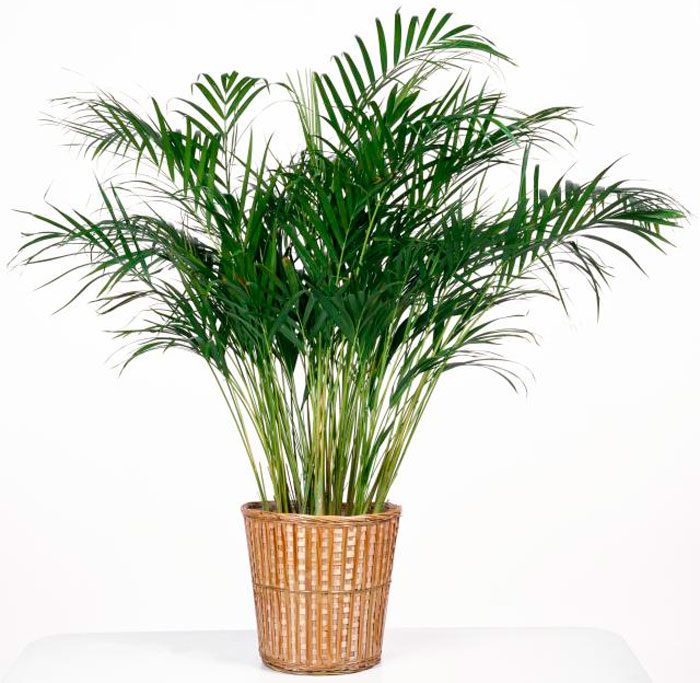
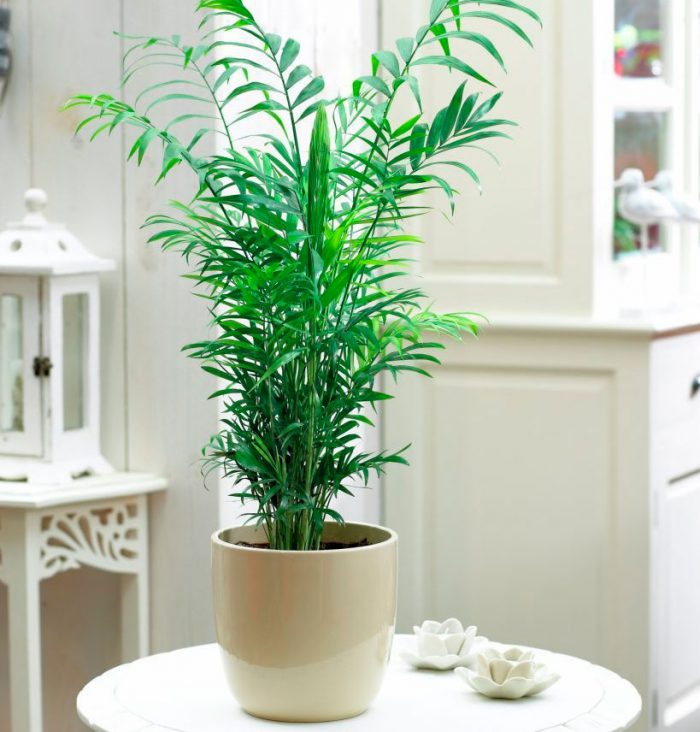
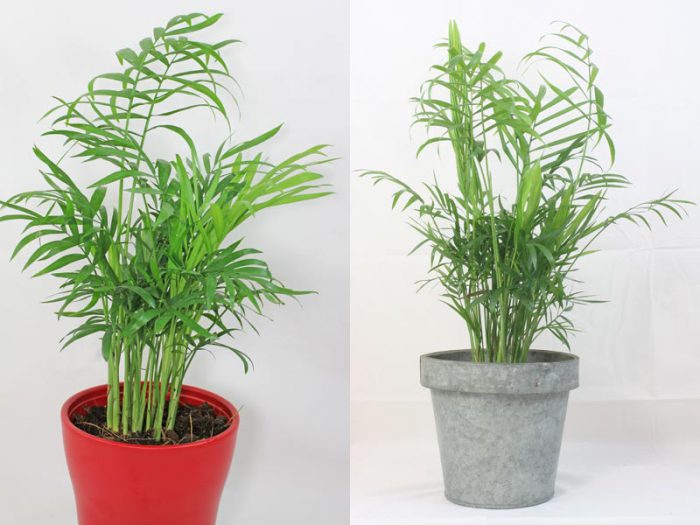
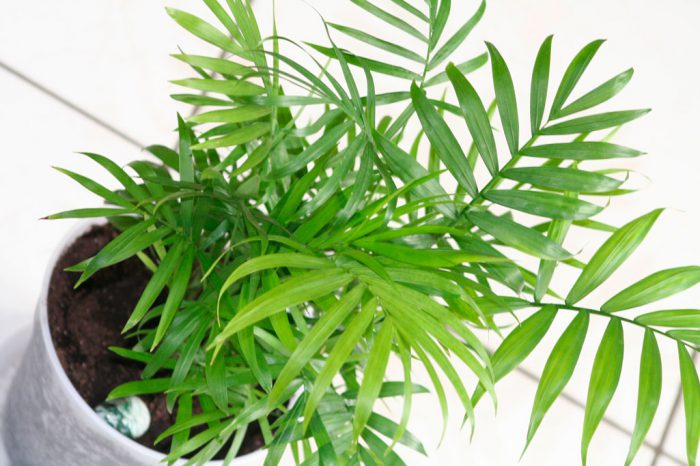


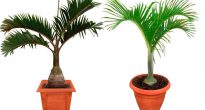

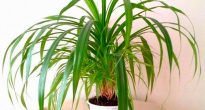





Thanks for the useful information
Why does chamedorea grow in one trunk?